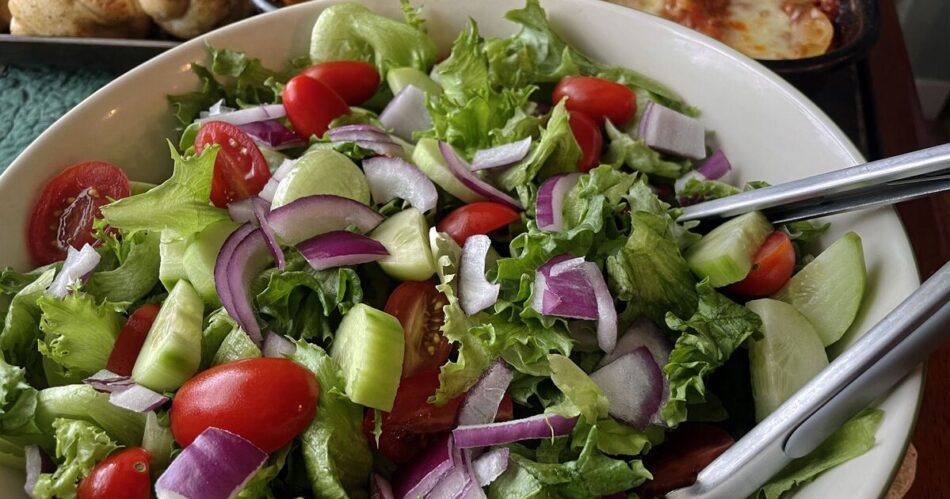Colourful, crisp salads are one of the pillars of summer, along with sunny days and the occasional barbecue. However, anyone who’s preparing them often knows it can be hard to keep them looking and tasting fresh.
That’s why a storage expert has shared with Express.co.uk the little-known secrets to preserving your salad for longer. It turns out there is a common habit that could be doing the exact opposite: contributing to its decay and leading to limp, watery veggies. So the first step is to make sure no moisture is getting to the prepped greens.
Vlatka Lake at Space Station, said: “When it comes to storing a salad, the key thing to remember is limiting moisture. Many salads include some form of lettuce as the base, which is full of liquid that may saturate other ingredients.
“The same goes for other popular fruits and vegetables such as tomatoes and cucumbers.”
Moisture is the number one enemy when it comes to preserving freshness. That means taking a few extra moments to dry ingredients thoroughly – ideally with a salad spinner or paper towels – can make a major difference.
Once you’ve covered the basics, you might also want to rethink how you assemble and pack your salad.
“If your salad contains any cooked items or proteins, such as eggs, chicken or tofu, these should ideally be stored in a separate container,” advised Vlatka.
“Whilst they are flavoursome additions to any salad, they often result in your salad becoming slimy and odorous.
“The same goes for any croutons, as well as your dressing, which you should avoid adding to your salad before storing, as this is the number one culprit for soggy salads.”
Once your ingredients are sorted and separated, it’s time to pick the right container, and plastic isn’t your best bet.
“Whilst plastic bags and tubs are a go-to option for many of us, you’re far better off opting for an enclosable glass container or mason jar,” Vlatka explained.
“This limits exposure to outside oxygen and moisture, which cause your salad to spoil and wilt at a much faster rate.”
To go the extra mile, Vlatka suggests lining the base of your container with a sheet or two of kitchen roll to help soak up any lingering moisture and keep ingredients dry and crisp.
Finally, proper placement in the fridge is just as crucial as prep, with Vlatka suggesting to “place your container on a shelf in your refrigerator, avoiding overcrowding or spots near the back of the shelf, where colder temperatures may lead to your salad freezing.”









